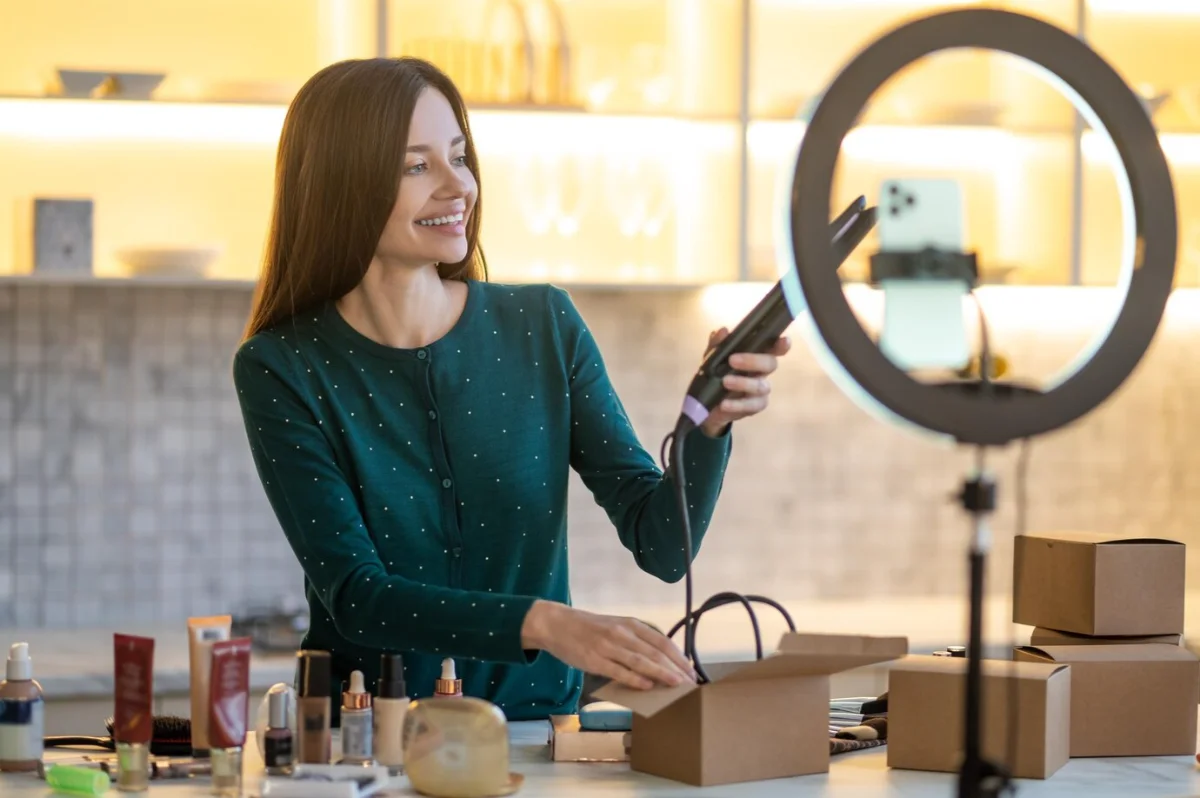The E-commerce Blog

How to Utilise Social Media for Retail Brand Growth
Social media has changed retail. It gives businesses new ways to connect with customers. Retailers can use platforms like Instagram, Facebook, TikTok, and Twitter. This helps boost brand visibility, build customer loyalty, and increase sales. Retail brands can’t ignore social media anymore. With billions of daily users, it’s essential for growth and success.
This guide shows how retailers can use social media marketing. It helps boost brand presence, strengthen customer relationships, and enhance online engagement. We’ll discuss key strategies, expert tips, and best practices to succeed in the tough digital world.
Quick Guide: Steps to Grow Your Retail Brand Using Social Media
- Define Your Brand Identity: Keep a consistent tone, colour scheme, and message on all social media platforms.
- Pick the Right Platforms: Use social media that fits your audience. For example, choose Instagram for visual stories and LinkedIn for B2B connections.
- Create Engaging Content: Use a mix of images, videos, and interactive posts to keep your audience engaged.
- Use Influencer Marketing: Work with influencers that match your brand. This helps you reach more people and build trust.
- Optimise Posting Schedule: Check analytics to find the best times to post. Keep a regular posting schedule.
- Engage with Your Audience: Reply to comments, messages, and mentions quickly. This helps build relationships and boosts customer loyalty.
- Run Targeted Ads: Use social media ads to reach specific groups. This can drive traffic to your online or physical store.
- Monitor and Analyse Results: Check analytics often to see engagement, conversions, and ROI. Adjust your strategy accordingly.
Core Concept: The Power of Social Media for Retail
Why Social Media Matters for Retailers
Social media marketing is more than just posting product photos and updates. It involves a strategic approach to brand storytelling, customer interaction, and sales optimisation. More than 54% of social media users check these platforms to learn about products. This makes social media a key part of the shopping journey.
Key Benefits of Social Media for Retail Brands

- Increased Brand Awareness: Social media platforms provide a vast audience reach. It helps retailers gain exposure.
- Boost Customer Engagement: Brands can build stronger ties with their audience using comments, direct messages, and fun interactive content.
- Boosted Sales and Conversions: Instagram and Facebook now offer direct shopping. This makes buying easy and quick.
- Cost-Effective Marketing: Social media marketing gives better returns than traditional ads. It uses targeted ads and has a strong organic reach.
- Real-Time Customer Insights: Social media analytics lets retailers see what customers like. This helps them change their marketing strategies to fit those preferences.
Step-by-Step Guide: Implementing a Successful Social Media Strategy
1. Define Your Brand’s Social Media Goals
Before diving into content creation, establish clear objectives. Are you looking to increase brand awareness, drive sales, or boost customer engagement? Defining your goals will shape your strategy and content approach.
2. Choose the Right Platforms
Not all social media platforms yield the same results. Retailers should focus on platforms that align with their target audience:
- Instagram & Pinterest – Ideal for visually-driven brands such as fashion, beauty, and home decor.
- Facebook – Great for community building, running targeted ads, and providing customer service.
- TikTok – Excellent for viral marketing, influencer collaborations, and reaching younger audiences.
- Twitter – Effective for real-time engagement, brand updates, and customer interactions.
3. Create High-Quality and Engaging Content
Content is the heart of any social media strategy. To capture audience interest, consider:
- Visual Appeal: Use high-resolution images and videos to showcase products effectively.
- User-Generated Content (UGC): Encourage customers to share their experiences and feature their content.
- Live Streaming & Stories: Use live video and ephemeral content to build authenticity and urgency.
- Interactive Posts: Polls, quizzes, and Q&A sessions can drive engagement and boost brand recall.

4. Leverage Influencer Marketing
Partnering with influencers can amplify brand credibility and reach. Pick influencers who have an audience that matches your target group. Work together on genuine promotions.
5. Utilise Social Media Advertising
Paid social media ads can enhance visibility and drive conversions. Use targeted ads to connect with potential customers. Focus on their demographics, interests, and browsing habits.
6. Engage With Your Audience Consistently
Social media is a two-way communication channel. Respond promptly to comments, messages, and mentions. Engaging with followers fosters brand loyalty and improves customer satisfaction.
7. Monitor Performance and Adjust Strategies
Use tools like Facebook Insights, Instagram Analytics, and Google Analytics. They help measure how well your campaigns are doing. Track metrics such as engagement rates, conversion rates, and follower growth to refine your strategy.
Pro Tip: Leverage user-generated content to build authenticity and trust. Encourage satisfied customers to share their experiences and feature their posts on your brand’s social media.
Advice to Remember
- Consistency is Key: Post regularly to maintain visibility and engagement.
- Use Hashtags Wisely: Look up hashtags that matter. This helps you reach more people and gain new followers.
- Offer Special Social Media Deals: Get your followers excited with time-limited discounts and unique offers.
Important: Keep branding, messaging, and posting schedules consistent. This helps maintain audience engagement and builds credibility on all platforms.
Things to Consider
- Avoid Over-Promotion: Excessive sales-driven content can deter followers. Balance promotional posts with informative and entertaining content.
- Stay Authentic: Social media users value authenticity. Ensure that your brand’s voice remains genuine and relatable.
Secret Tip: Use social media analytics to track engagement patterns and refine your strategy. Identifying peak activity times and high-performing content helps maximise your reach and impact.
Best Practices & Additional Insights
- Optimise Your Profile: Make sure your social media profiles have a clear bio, good images, and current contact info.
- Use Social Commerce: Take advantage of shopping tools like Instagram Shop and Facebook Marketplace.
- Run Contests & Giveaways: Encourage user participation and reward loyal customers.
- Adapt to Trends: Stay updated with social media trends and incorporate them into your content strategy.
FAQs
How often should a retail brand post on social media?
It depends on the platform and audience. A good benchmark is posting 3-5 times per week on Instagram and Facebook, while Twitter can require more frequent updates.
What types of content perform best for retail brands?
Great product images, customer reviews, behind-the-scenes clips, live videos, and fun posts like polls and quizzes usually do well.
How can I measure the success of my social media efforts?
Monitor important metrics like engagement rate, follower growth, click-through rate, and conversion rates. Use social media analytics tools for tracking.
Should I invest in paid social media advertising?
Yes, paid advertising can help target specific audiences, boost engagement, and drive sales. Start with a small budget and scale up based on performance insights.
What’s the best way to handle negative comments on social media?
Respond professionally, address concerns promptly, and offer a resolution. Avoid deleting negative comments unless they violate community guidelines.
Elevating Your Retail Brand Through Social Media
In today’s digital-first world, social media is a powerful tool for retail brand growth. Businesses can use personalised content, engaging stories, and smart ads. This helps them connect with their audience and achieve long-term success.
Retailers that use social media marketing to create great content, and connect genuinely with customers will stand out in the market. No matter if you run a small business or a big brand, using social media in your retail plan is key for growth and staying strong.
Begin using these strategies today. Your retail brand will thrive in the changing world of social media!









